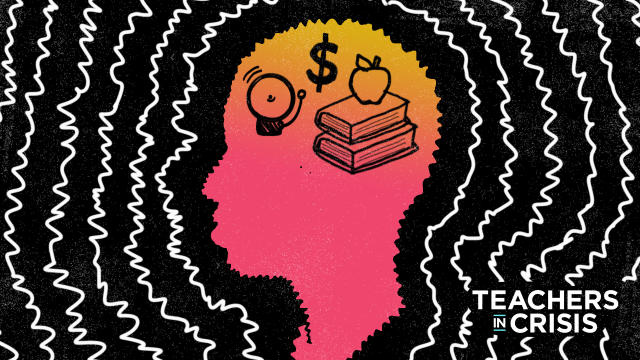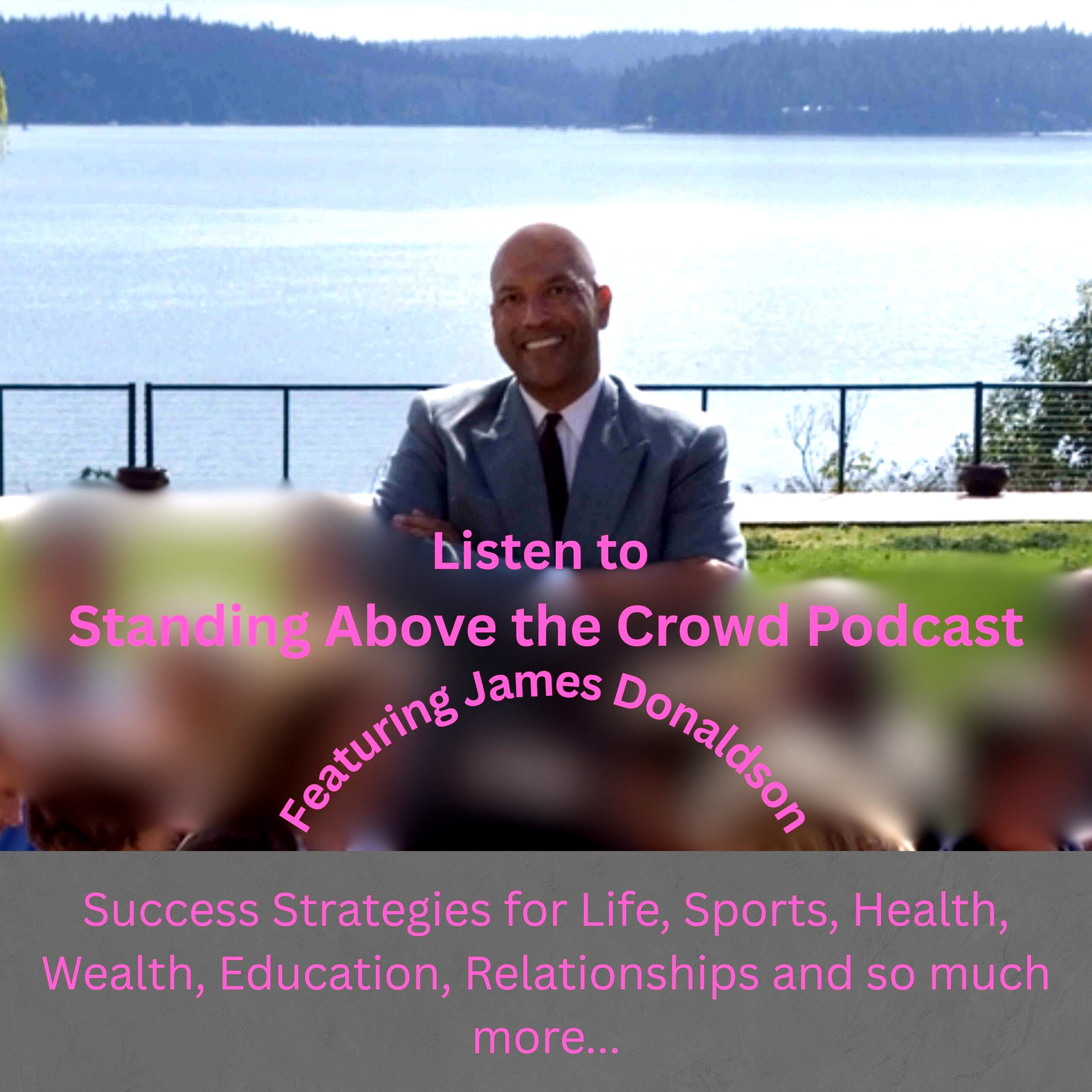
After 24 years of teaching at public schools in Louisiana, Holly Beth says she often felt “defeated” before she entered the school doors. Nonetheless, like clockwork, she would eat, sleep and repeat — until she felt the the emotional shift that changed everything.
“I looked at my husband and said, ‘I think everyone would just be better off if I wasn’t here,’” Beth recalls for Yahoo Lifestyle. That never-before-vocalized thought, which she shared through uncontrollable tears, was a defining moment that set off alarm bells for the 24-year teaching veteran. “That,” she says, “is when I knew I needed help.”
Beth went to a medical professional, who diagnosed her with #depression and #anxiety, clearly fueled by the high #stress of #teaching. She began taking Cymbalta, an anti-depressant — and without it, she says, she would not have finished the last school year. “Only with the medication could I stay,” Beth says.
She is hardly alone in her struggle. In interviews with Yahoo Lifestyle, more than a dozen teachers across the U.S. opened up about how increasing demands of their job have negatively affected their #mentalhealth, resulting in #insomnia, #depression, #anxiety and panic attacks, sending many into therapists’ offices and to drugstores to pick up prescriptions — and pushing others out of the education field altogether.
#JamesDonaldsononMentalHealth –
Welcome to the “next chapter” of my life… being a voice and an advocate for #mentalhealthawarenessandsuicideprevention, especially pertaining to our younger generation of students and student-athletes.
Getting men to speak up and reach out for help and assistance is one of my passions. Us men need to not suffer in silence or drown our sorrows in alcohol, hang out at bars and strip joints, or get involved with drug use.
Having gone through a recent bout of #depression and #suicidalthoughts myself, I realize now, that I can make a huge difference in the lives of so many by sharing my story, and by sharing various resources I come across as I work in this space. #http://bit.ly/JamesMentalHealthArticle
Research has shown that the problem is widespread — and, in some places, getting worse. A 2015 survey by the #AmericanFederationofTeachers found that 34 percent of teachers cited a decline in their #mentalhealth (meaning increased stress, #depression and emotional challenges). Two years later, that number jumped to 58 percent. Keith Herman, a University of Missouri professor, authored a 2017 study which found that 93 percent of elementary school teachers report experiencing a high-stress level.
“Studies since the 1990s have shown that teaching is one of the most stressful occupations, and teachers experience high levels of burnout and social-emotional symptoms and disorders at higher rates than many other professions,” Herman tells Yahoo Lifestyle, adding that a forthcoming survey conducted on middle school teachers found nearly identical results, with 94 percent of middle school teachers having stress profiles marked by high levels of work #anxiety.
What new teachers find in the classroom is often different than what they expected — children experiencing physical and sexual abuse at home, struggling with #mentalhealth issues and #suicide and witnessing or exacting violence towards fellow students and teachers — leaving teachers with secondary traumatic stress or even post-traumatic stress disorder.
Dr. Gerald A. Juhnke of the University of Texas Austin’s Department of Counseling has been on the frontlines of some of the highest #stress classrooms, creating interventions for teachers and students in the District of Columbia School District’s 15 most violent schools. “The majority of teachers are very easy-going, compassionate people. They went into this profession to be kind and to help kids,” Juhnke tells Yahoo Lifestyle. “Then we see what some students face all the time in their homes with substances and the growing threat of #suicide and violence against other students and I think this is really very difficult for them.More kids are being abused that they just have a hard time processing that,” says Juhnke.
“There are teachers that don’t know how to give up and will fight to the bitter end… It’s to our detriment,” says a San Diego educator who takes Xanax for panic attacks (and has requested anonymity). “We’re trying to survive a career that is destroying us.”
Beth echoed these thoughts, telling Yahoo Lifestyle, “If you’re killing yourself 10 hours a day and nothing is right and [students are] not succeeding, there’s just no fulfillment.” For her, the pressure came largely from the school administration mandating daily faculty meetings and increased teacher scrutiny to raise the state test scores. It was enough to lead to her #suicidalideation.
“The thoughts that I had this time were that it would just be so easy to drive off the road,” Beth says. While she says there was no plan to actually do so, “it was just there in the back of my mind that it would be so much easier if I wasn’t here.”
“I felt defeated”
Faced with larger class sizes and seemingly impossible standardized test-score requirements, many other teachers have also begun to develop symptoms of #depression and #anxiety.
Victoria Wang, a teacher in Austin, Tex., says she reached her breaking point when she cried in front of her kindergarten students halfway through her second year of teaching. Overwhelmed with the increasing demands of teaching, it wasn’t the first — or last — time she cried.
Still, after that first shattering of the cheery façade she had so carefully constructed, Wang marked on Facebook the day she “crashed and burned.”
“I feel defeated. I feel angry for the students I wasn’t able to reach. I feel guilty because perhaps I should have tried more and fought harder. I feel weak because I see so many other incredibly strong, passionate educators pushing through,” she posted in January.
In the post, Wang, 24, blamed the all-consuming nature of teaching — “endless to-do lists, stacks of papers to grade, dozens of lessons to internalize, goals and percentages we need to meet” and more — for her breakdown. While there’s always more that teachers can do for their students, she wrote that “it cannot be all that we are.”
“I think the idea of teaching — in an ideal day in the profession of teaching — is what held back a lot of my depressive and #suicidalthoughts,” Wang tells Yahoo Lifestyle. “But the reality of teaching — feeling like you’re never enough, feeling like there’s always more to do, feeling like you’re failing all the time — that did crack it open a little bit. On the rough days, I would feel suicidal again.”
Although Wang struggled with chronic #depression before she became a teacher, she never took antidepressants. But the enormous workload and feelings of failure soon led her to start taking Wellbutrin. The new teacher says it helped her find “joy in small moments” of teaching — a skill she believes is critical to the vitality of any educator.
She’s also since started a podcast called Teacher Life Podcast to break the silence around teachers’ #mentalhealth, and to show others who may be suffering in silence that they are not alone. “Teachers deserve to be heard,” the description reads. “Their voices are important, and they are enough.”
“I couldn’t sleep”
According to medical experts, one of the common symptoms of #depression is difficulty sleeping — which explains why many teachers, suffering through bleak stretches, also cite having issues with sleep deprivation and #insomnia.
For former Greenville, S.C., English teacher Vance Jenkins, the dread of having to go to the classroom kept him up through all hours of the night.
“I couldn’t sleep,” Jenkins, who spent 19 years teaching, tells Yahoo Lifestyle. “[I had] feelings of extreme panic, breathlessness. [I would wake] up in the middle of the night with my heart racing, in a sweat.”
In his last few years in education, Jenkins, 54, recalls struggling to capture the attention of his high school students — often more laser-focused on their cellphone screens than the reading material he had assigned. But even worse than their “apathy,” he says, was the classroom violence: Jenkins once had a student who kicked another kid so hard he nearly broke his pelvis before being escorted out of his classroom by police.
“I was pretty miserable. I didn’t look forward to going into work,” he recalls. “I would get to school physically nauseous because of what I would face that day.”
After seeking professional help for his insomnia in 2016, Jenkins started going to therapy, taking Ambien to sleep at night and Klonopin and Prozac to treat his diagnosed #anxiety and situational #depression.
For Jenkins, though, the prescriptions, which he took for a total of five years, were not enough; instead, he wound up leaving his job in the middle of the 2018 school year. And his #insomnia and #anxiety, as a result, have receded naturally.
“Life is good. I am much more at peace with myself and I can rest,” Jenkins says, and, even though he now worries about issues such as money and insurance, “there’s nothing that would make me want to go back.”
“I’m scared to death”
Iowa teacher Cassie Lewellen, meanwhile, has found a way, for now, to keep on teaching. That’s despite her intense #anxiety, which stems from her first graders’ volatile behavior. Most days, Lewellen explains, she is forced to evacuate her classroom when one of her students flips a table or punches a wall. But last year, she landed in the emergency room after a first-grader repeatedly kicked her.
“Those poor kids spend an hour not learning anything at school, or they stay in the room and I have to chance the fact that they could get hurt,” says Lewellen about the violent outbreaks. “I shouldn’t have to worry about that at my job.”
Even before that emergency-room incident, the 27-year-old says that she began struggling with headaches so excruciating that she had to call administrators to temporarily monitor her room so she could take a break. Lewellen went to her doctor to discover the migraines were “entirely anxiety-induced,” and now takes Zoloft, an anti-depressant.
“I go on the meds and it’s like I’m much more patient and kind and caring. They’ve helped a lot,” says Lewellen, who still teaches in Des Moines. ”But it would be nice if my job didn’t mean I had to be on them.”
Lewellen’s family urged her to quit after last year’s “nightmare,” but she’s staying until she finds another job with affordable insurance, which she needs for the blood thinners she takes for an injury caused by her student.
“I’m scared to death. I cannot imagine being a classroom teacher like this for rest of my life,” says Lewellen. “I love teaching. But I don’t love teaching enough to put myself at risk anymore.”
If you are a teacher experiencing a decline in your #mentalhealth due to the pressures of education, reach out to Happy Teacher Revolution, an organization that provides a network of educators that serves as a support system for those who are struggling with the shame, blame, guilt and difficulties of balancing an incredibly demanding profession with their own sense of self and happiness.
If you’re a teacher who wants to share your story, send an email to teachersincrisis@yahoo.com



